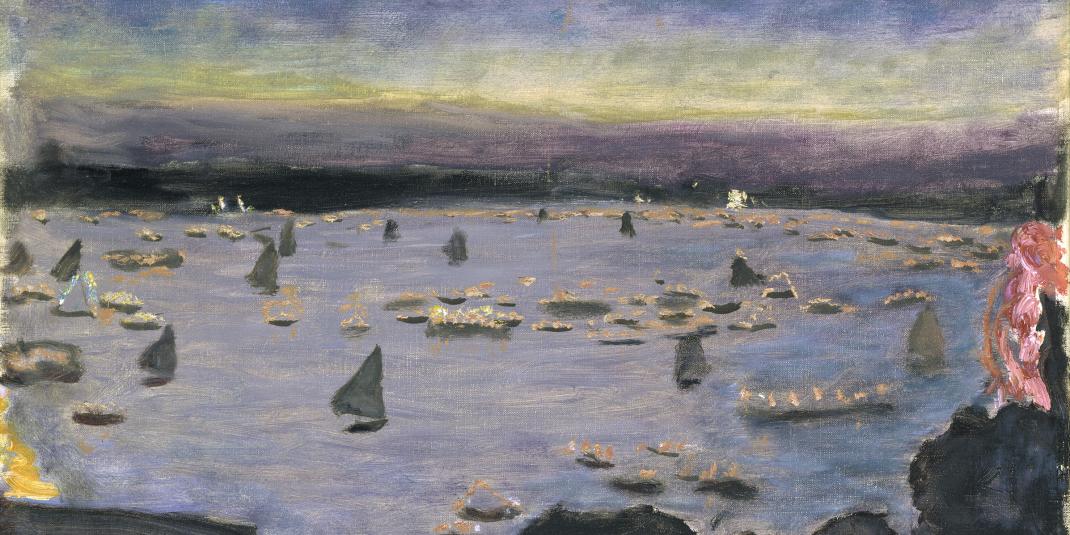
PIERRE BONNARD (1867-1947)
Lantern Procession on the Outer Alster , 1913
Featuring around seventy exhibits including paintings, sculptures and pastels, the exhibition focusses on the Hamburger Kunsthalle's considerable holdings of Impressionist works with the intention of showing them in a broader global context. Against the backdrop of resurgent nationalisms, the question also arises as to whether it still makes sense today to split Impressionism into national categories - and, if so, in which way this impacts our perception.
Generally, the Impressionist style is synonymous with France: with artists like Édouard Manet, Claude Monet or Auguste Renoir, with quaint, bright and colourful works often depicting outdoor scenes, or for serial examinations of haystacks, church façades and lily ponds, captured in the play of varying light moods at different times of the day or year. That the connection of »Impressionism and France« is not valid in this exclusivity, however, is revealed by a brief glance at other countries in which Impressionism developed, with a time lag, perhaps, but quite independently. In Germany, the well-known »triumvirate« of Lovis Corinth, Max Liebermann and Max Slevogt, so named even during their lifetime, are counted among the Impressionists. Even contemporary art scholars of the movement had regarded it at least as a European phenomenon.
While Impressionism lost significance in France, the country of its birth, at the latest with the onset of the First World War, in Germany Impressionist tendencies, especially in the context of art academies, lasted well into the 1920s. At the same time, with Fritz Wichert (Kunsthalle Mannheim), Hugo von Tschudi (Nationalgalerie Berlin and Neue Pinakothek München), Gustav Pauli (Kunsthalle Bremen and Hamburger Kunsthalle) as well as Alfred Lichtwark (Hamburger Kunsthalle), leading museum directors advocated this painting style, which thus found its way into the public collections.
The novel presentation of the works of Impressionism highlights both the differences between the German and French representatives, and their common features. At the same time, it seems important to inquire into what themes the painters on the right and left of the Rhine were concerned with, where their main impulses came from, what interactions can be traced visually and historically. The chapters »Portrait«, »Landscape«, »Staged Figure«, »City and Leisure« and »Still Life« serve as thematic groups within the show.